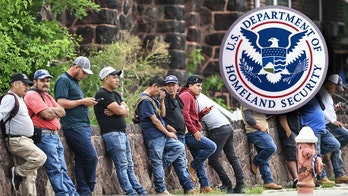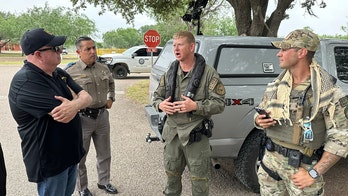Republican presidential candidate Donald Trump again touted a controversial policy from the 1950s Wednesday as a model for his plan to deport an estimated 11 million illegal immigrants.
The program, known as known as "Operation Wetback," was a complicated undertaking largely viewed by historians as a dark moment in America's past. It also coincided with a guest worker program that provided legal status to hundreds of thousands of largely Mexican farm workers.
Fox News' Bill O'Reilly confronted Trump about his support for the program Wednesday night on "The O'Reilly Factor."
"Believe me when I tell you, Mr. Trump, that was brutal what they did to those people to kick them back [across the border]," O'Reilly said. "I mean, the stuff they did was really brutal."
"I've heard it both ways. I've heard good reports, I've heard bad reports," Trump responded. "We would do it in a very humane way." The real estate billionaire also refused to refer to the program by its name, which is now widely considered a racial slur against Mexicans, saying "I don't like the term at all."
The 1954 initiative was aimed at apprehending and deporting agricultural workers who had crossed the border illegally looking for work.
Critics of the program say the conditions for those the agents apprehended were anything but humane. Many of the apprehended migrants were transported in crowded buses and dumped on the other side of the border in a manner some at the time equated with the treatment of livestock.
Rival GOP candidates have started to challenge Trump's deportation plan claims.
Sen. Marco Rubio, R-Fla., told Fox News on Thursday that the U.S. needs to deport criminal offenders, those overstaying visas and others.
But, he said, "I do not believe you can round up and deport 11 million people, especially people who have been here 15 years, have not otherwise violated a law."
Trump touted the Eisenhower-era program in Tuesday night's debate.
"Moved 1.5 million illegal immigrants out of this country, moved them just beyond the border. They came back. Moved them again beyond the border, they came back. Didn't like it," Trump said. "Moved them way south. They never came back."
"He's only got part of the story," Mae Ngai, a professor of history at Columbia University, told the Associated Press.
According to a summary of the project from the Texas State Historical Association, the United States Border Patrol "aided by municipal, county, state, and federal authorities, as well as the military, began a quasi-military operation of search and seizure of all unauthorized immigrants."
The project, Ngai said, began with 750 immigration officers and border control agents, who used jeeps, trucks, buses and airplanes to apprehend migrants nationwide, including in Los Angeles, San Francisco and Chicago. They apprehended 3,000 people a day and 170,000 during its first three months.
In one incident, Ngai said, 88 apprehended Mexicans died of sunstroke after being subjected to 112-degree heat. The number would have been higher had the Red Cross not intervened.
Some of those apprehended were sent deep into the interior of Mexico to prevent re-entry by train or cargo ship, where conditions drew the attention of federal regulators.
One congressional investigation likened a transport ship that was the site of a riot to an "eighteenth century slave ship" and a "penal hell ship."
Trump also leaves out of his advocacy for the Eisenhower-era approach the fact the program was developed to complement a guest-worker program that began in the 1940s and was aimed at allowing Mexican farmworkers to enter the country and work in the U.S. legally.
Hundreds of thousands of farm workers did so, and the deportation effort was conceived as a way to pressure employers into using the guest worker program.
"It was like a carrot and a stick," Ngai said.
While Trump has put the number of deportations at 1.5 million, most accounts suggest the numbers are far fewer, because they included those who chose to leave the country voluntarily as well as people who returned after being deported and were deported again.
Trump has yet to lay out precisely how he would track down those living in the country illegally, or how he would determine who are "the good ones" that he would allow to return.
Both John Kasich, Ohio's governor, and Jeb Bush, the former governor of Florida, rejected Trump's plan on Tuesday night as unrealistic and cruel.
"To send them back, 500,000 a month, is just not, not possible," Bush said. "And it's not embracing American values. And it would tear communities apart. And it would send a signal that we're not the kind of country that I know America is."
The Associated Press contributed to this report.




